More than just a photo spot, teamLab Planets Tokyo invites visitors to wander, wade, and wonder. Located in Toyosu, this immersive art space dissolves the boundaries between body, artwork, and environment. Water, mirrors, sound, and light come together to transform how people experience art.
This guide offers a clear and thoughtful overview of what to expect, how to prepare, and why this isn’t just another trendy attraction.
Also read: teamLab Biovortex Kyoto Opening in 2025: What to Expect
What is teamLab Planets Tokyo?
teamLab Planets is unlike a traditional museum. Created by teamLab, a Tokyo-based art collective, the space combines technology, nature, and interactive design to create immersive, full-body sensory experiences. Visitors move through a series of rooms where they are not simply observers, but participants. Many of the works respond to movement or touch, creating a sense of collaboration between the visitor and the environment.

Image Credit: teamLab Planets Tokyo Official Website
At various points in the experience, you may find yourself walking barefoot through water, lying on mirrored floors surrounded by flowers, or navigating soft, shifting spaces where balance feels uncertain. The aim is not just to impress with visuals but to break down the sense of separation between self and world.
When to go and how to book
teamLab Planets Tokyo is open daily from morning to night, typically from 9 am to 10 pm. The quietest times tend to be weekday mornings and late evenings. Tickets are sold by timed entry, which helps reduce crowding, though popular timeslots often sell out in advance.
You can book through platforms like Klook or the official teamLab website. Tickets vary by age, and premium passes are available for those who want to skip the lines. As of now, the exhibition is set to remain open until the end of 2027.
What to wear and bring
Because the space is highly interactive, especially in the water-based rooms, dressing for the occasion is important. Visitors are required to remove their shoes and walk barefoot throughout the museum. Some rooms feature water that reaches up to the knees. Clothing that can be rolled up or dries quickly is recommended. Long skirts or dresses may be tricky due to mirrored floors, though the venue offers modesty wraps and rental shorts if needed.
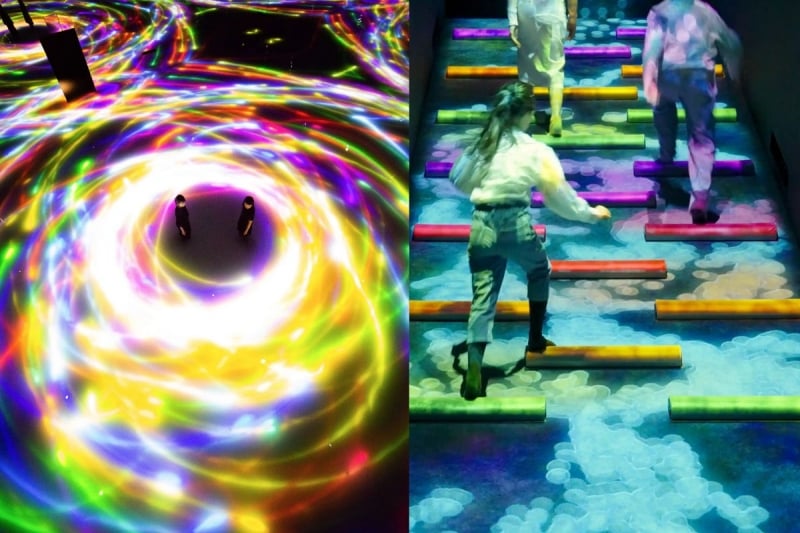
Image Credit: teamLab Planets Tokyo Official Website
Footwear should be easy to take off and put back on. Avoid stockings or tights, as they will need to be removed. It is also advisable to cover any open cuts on your feet, as the water contains chlorine. Finally, keep your phone secure, especially in deeper or darker rooms where it is easy to drop something by accident.
Also read: Souvenirs to Buy in Tokyo: Sweet Snacks Worth Bringing Home From Japan
What to expect inside: a walk through the exhibits
The museum unfolds in a one-way path that moves between darkness and light, stillness and motion. There are no maps or clear directions, and part of the experience lies in moving intuitively, allowing yourself to be surprised.
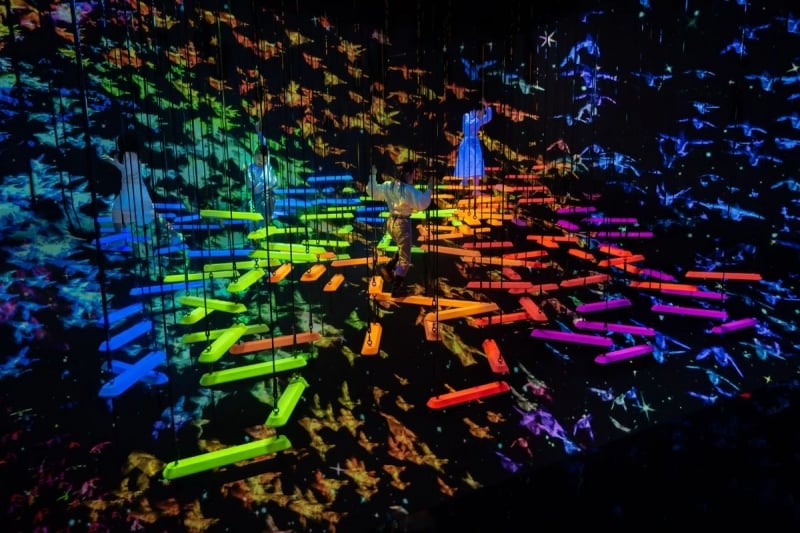
Image Credit: teamLab Planets Tokyo Official Website
The journey begins with a dim corridor that gradually fills with flowing water. This sets the tone for what follows. In one room, soft, padded flooring sinks under each step, changing shape in response to the movement of others. It is both playful and slightly disorienting.
Later, visitors wade through shallow pools where koi fish are projected beneath their feet. These koi scatter on contact, transforming into flowers in real time. Other rooms are filled with hanging lights or floral animations, creating the illusion of floating in space. In these moments, the usual rules of space and perspective seem to fall away.

Image Credit: teamLab Planets Tokyo Official Website
Some installations incorporate sound as well, with tones that ripple outward when you touch certain objects. Others invite quiet observation, such as the dome filled with shifting flowers that grow, bloom, and dissolve above you.
The garden areas introduce actual living elements. One room features thousands of real orchids that rise and fall in slow waves. Another space includes glowing, moss-covered forms that respond to touch and wind. These installations offer a quiet contrast to the more high-intensity light and sound environments inside.
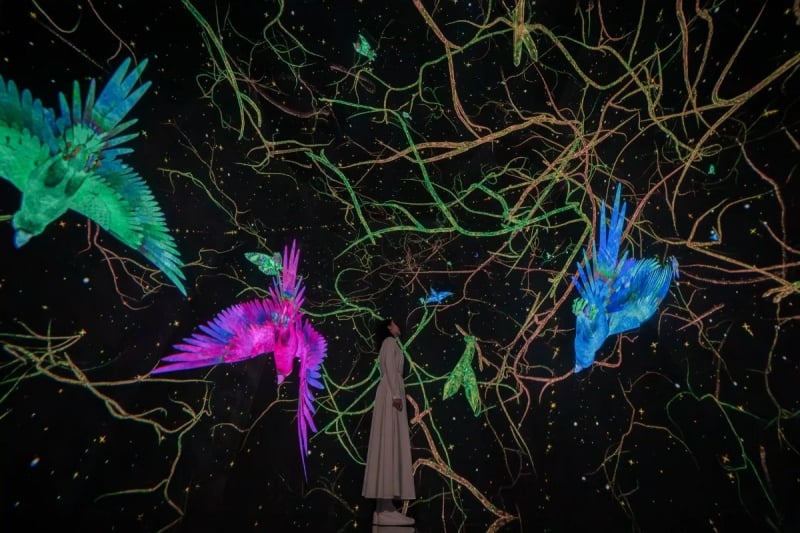
Image Credit: teamLab Planets Tokyo Official Website
In 2025, several new areas were added, including spaces designed with younger visitors in mind. These include movement-based zones, digital sketching rooms where drawings come to life, and interactive learning areas where you can capture and study virtual creatures through an app.
Where to eat and rest nearby

Image Credit: teamLab Planets Tokyo Official Website
At the end of the exhibition, visitors exit into a public space that includes a small but thoughtfully designed dining area. The most well-known option is Vegan Ramen UZU Tokyo, a minimalist ramen shop known for its oat milk broth and visually striking interior. The space is surrounded by projected calligraphy and mirrored surfaces, continuing the theme of blurring boundaries.
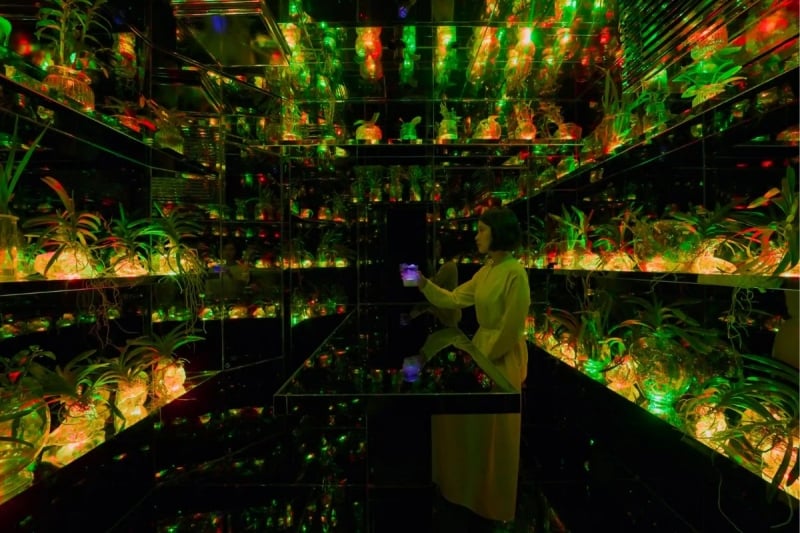
Image Credit: teamLab Planets Tokyo Official Website
There is also a teahouse called the Orchid Glass House, which serves glowing drinks in a setting filled with regrown orchids from the exhibit. Seating is limited, and the environment remains quiet and meditative.
Public seating nearby is also integrated with artistic design, offering places to sit and reflect without immediately leaving the atmosphere of the museum.
Essential tips for a smooth visit
There are a few small but important details that can improve your visit. The museum has only one restroom, located before the entrance, so it is best to go beforehand. Strollers are not allowed inside, so families with young children should come prepared with a baby carrier. For children who are likely to play or get splashed, a spare set of clothes is useful.

Image Credit: teamLab Planets Tokyo Official Website
The official teamLab app enhances many of the artworks, allowing you to interact with digital elements or even influence the exhibits in real time. It is worth downloading the app in advance to avoid connectivity issues, especially if you do not have local data.
Also read: Tokyo Subway Guide: How To Get Around Japan Using Trains
Final thoughts
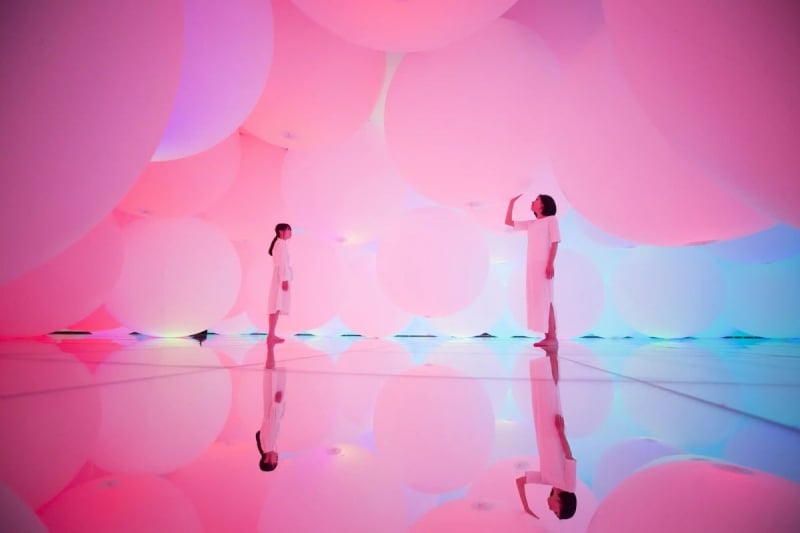
Image Credit: teamLab Planets Tokyo Official Website
teamLab Planets is often described as a place for taking beautiful photos, and it is easy to see why. But beyond the visual spectacle, the experience invites a different kind of attention. It asks visitors to move more slowly, to feel with their bodies rather than just observe with their eyes. In doing so, it opens a space for quiet reflection and childlike curiosity.
Whether you are drawn to it for the art, the technology, or the sensation of walking through water in the middle of Tokyo, teamLab Planets offers something more than novelty. It is a rare invitation to pause and experience presence in full.




